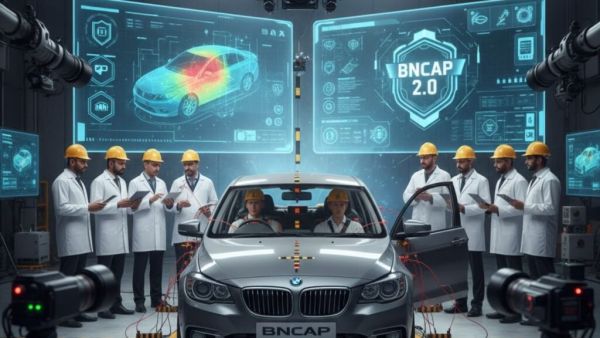
Earlier when buying a car only the mileage and price of the car was the first thing to go for. However, today’s consumer is also keen on safety features in a car. Many car manufacturers also offer 6 airbags and other features as standard safety features in their cars. Also, to win the trust of the customers, Bharat NCAP conducts car safety tests. However, now the safety rules are likely to be stricter.
To take the safety of Indian motorists to the next level, the Ministry of Road Transport and Highways (MoRTH) has released a draft notification for India NCAP 2.0. This new proposal, called AIS-197 Revision 1, is planned to be implemented from October 2027.
So far, the safety of a car in India NCAP was mainly based on the protection of adult and child passengers. But, the government has significantly increased the scope and standards of testing. A car will now be given a star rating by combining scores from five different safety categories. This will allow for a more accurate assessment of the safety of each car.
Toyota Fortuner is sweating! Kia’s ‘This’ Hybrid Car will make a splash in the market
In BNCAP 2.0 the highest importance (55%) will be given to the crash test in the safety assessment. The only difference is that earlier companies could easily get a 5-star rating based on strong body structure and airbags; But now it will not be possible.
The new system includes five mandatory and more difficult crash tests. It will conduct detailed testing of the car’s structure, post-accident effects and passenger safety. Therefore, it will be mandatory for the vehicle manufacturing companies to make the car safer by making technical improvements.
Now the safety of the vehicle will not only depend on its body structure, but ADAS (Advanced Driver Assistance Systems) features will also be given importance.
According to the new rules, 10% of the score will be reserved for ADAS features, including advanced features like automatic emergency braking, lane-keeping, front collision warning.
Before buying Royal Enfield Super Meteor 650, get ‘these’ things in mind
This change will increase the use of modern safety technology in cars and help prevent road accidents earlier.
The new BNCAP 2.0 also focuses on the safety of pedestrians and two-wheeler drivers.
This will involve independent testing of the front section of the vehicle, which will reduce head or leg injuries to pedestrians in the event of an accident.
Apart from this, the AEB (Automatic Emergency Braking) system with pedestrian and bike detection capabilities will also be part of the SCORE. This category has been given 20% importance and this will require the vehicle companies to improve their designs.